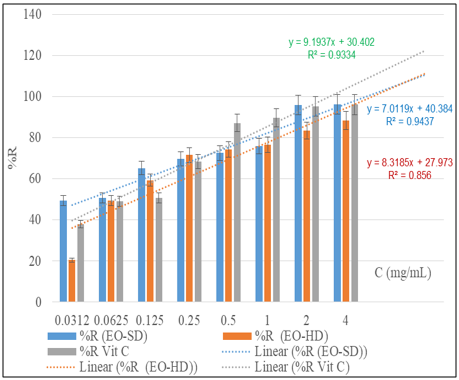- Printed Journal
- Indexed Journal
- Refereed Journal
- Peer Reviewed Journal

Journal of Pharmacognosy and Phytochemistry
Vol. 14, Issue 5 (2025)
Chemical composition, antioxidant and antimicrobial activities of essential oils from emilia praetermissa Milne-Redh from Cote D’Ivoire: A comparative analysis of hydrodistillation and steam drive methods
Bosson Antoine Kouame, Kouamé Séraphin Kouassi, Janat Akhanovna Mamyrbékova-Békro and Yves-Alain Bekro
This study aims to enhance the value of Ivorian aromatic plant resources through a comparative analysis of the influence of extraction methods on the chemical composition and biological properties of essential oils. The chemical composition of the essential oil from the aerial parts of Emilia praetermissa Milne-Redh (Asteraceae) was carried out for the first time by gas chromatography coupled to mass spectrometry (GC-MS) with calculation of retention indices. Antioxidant and antimicrobial activities were evaluated by spectrophotometry and microdilution methods, respectively.
Two extraction processes were compared: hydrodistillation (HD) and steam distillation (SD). The essential oil obtained by HD has a pale yellow color compared to that obtained by SD which is yellow. The extraction yield using HD (0.06±0.02%) was significantly higher than that obtained using SD (0.04±0.02%).
Phytochemical analysis revealed that the essential oils were predominantly composed of oxygenated compounds (33.11-49.63%), followed by alkenes (23.66-25.87%), sesquiterpenes (20.23-21.63%), and monoterpenes (3.34-14.2%). The major compound identified were caryophyllene oxide (24.02-27.74%) and 1-undecene (23.66-25.58%), regardless of the extraction method. Both essential oils demonstrate remarkable antioxidant potential, with RC₅₀ values of 0.014±0.01 mg/mL (EO-SD) and 0.026±0.01 mg/mL (EO-HD). Antimicrobial activity assessment revealed efficacy against the majority of bacterial and fungal strains tested, with minimum inhibitory concentrations (MIC) of 3.75 mg/mL.
These results highlight quantitative and qualitative variations in the chemical composition of essential oils depending on the extraction process, confirming the importance of methodological choice for optimizing biological properties.

Fig. 1: Comparative diagram of reduction percentage
Pages: 460-465 | 76 Views 36 Downloads







